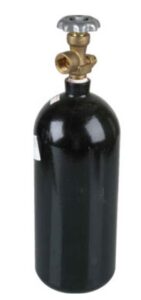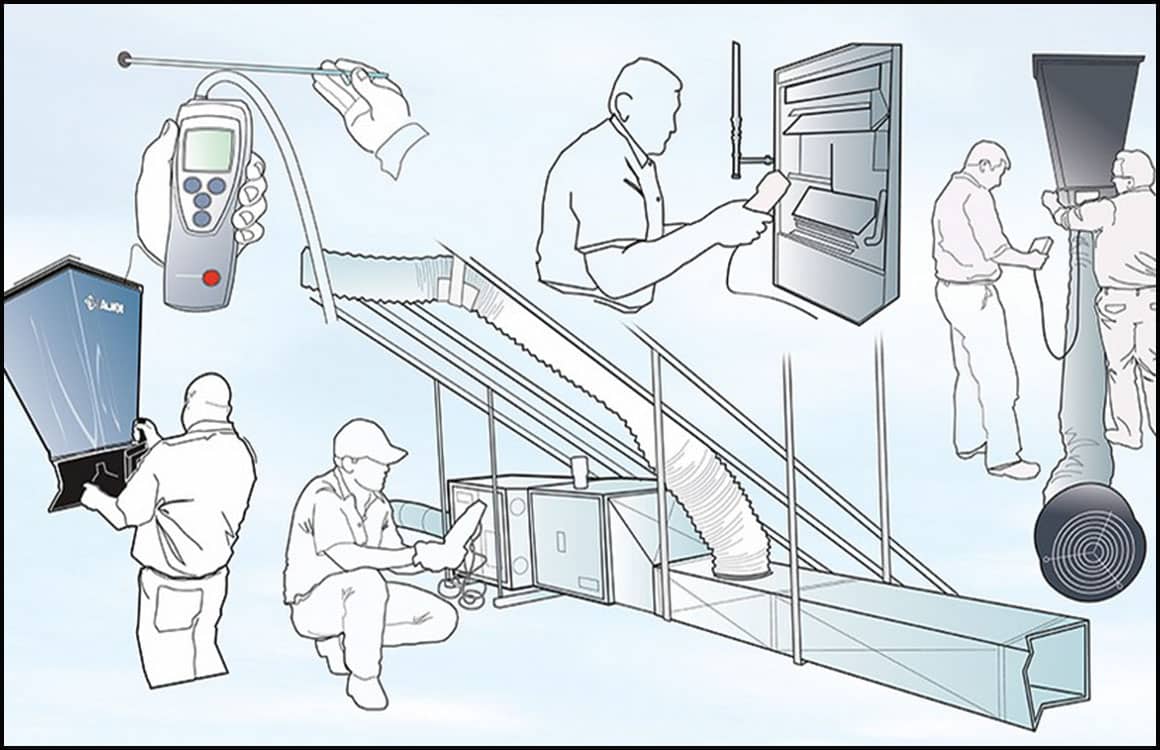 In the last year or so, I have had a couple of puzzling experiences related to pulling a vacuum. These instances have left me with questions and clues where I thought I had given up on understanding a certain vacuum situation. Typically, if I’ve had a hard time achieving a proper vacuum, I would be confused and upset because I felt I was doing everything right. But some unexpected moments this summer opened my eyes.
In the last year or so, I have had a couple of puzzling experiences related to pulling a vacuum. These instances have left me with questions and clues where I thought I had given up on understanding a certain vacuum situation. Typically, if I’ve had a hard time achieving a proper vacuum, I would be confused and upset because I felt I was doing everything right. But some unexpected moments this summer opened my eyes.
Over the summer, while replacing an evaporator coil, I had to cut out a filter drier inside of a condenser and add a new one on the liquid line (which may not be necessary, according to this recent livestream). That meant I had to pull a vacuum on the entire condenser. I use the single-hose method on the suction side and a micron gauge on the liquid line, as far away from the vacuum pump as possible in order to ensure a proper vacuum. Much has already been written and said about this topic, but you can watch this video for a full walkthrough.
In many cases, such as when I’m just replacing an evaporator coil or doing a new system start-up, the one-hose method works perfectly. I achieve sub 500-micron vacuums in less than 30 minutes. However, I often struggle with systems where I need to pull a vacuum on an entire condenser. On this particular job, I was struggling. My vacuum was stuck around 2000-1000 microns. I had been pulling a vacuum for a couple of hours. Then, the sun popped over the roof of the house and began beating on the condenser. Within minutes, the microns dropped below 500. What gives?
Around the same time, I was replacing a condenser and was having similar trouble pulling a deep vacuum on JUST a lineset and evaporator coil. I called a friend who recommended sweeping with nitrogen. I swept the system with nitrogen a few times (triple evac, anyone?), and voila! Success.
 These two experiences had me suspecting that I had been leaving a couple of tools out of my toolbox when it came to vacuums. After confirming with other technicians, it became clear that nitrogen and heat are less common but tried and true methods of achieving success in tough vacuum situations.
These two experiences had me suspecting that I had been leaving a couple of tools out of my toolbox when it came to vacuums. After confirming with other technicians, it became clear that nitrogen and heat are less common but tried and true methods of achieving success in tough vacuum situations.
The team here at HVAC school reached out to Dr. Chuck Allgood at Chemours to try to understand why that was. Here is what the team at Chemours said:
“Removing the air and refrigerant is an easy process, but moisture removal is much more difficult and simply takes time. Moisture has strong molecular bonds and does not easily free itself from the surfaces it attaches to and can be small amounts in the oil. It takes heat energy and time for the bonds to break, and it takes a deep vacuum (lowers BP of water) for the pump to ultimately carry that moisture out of the system. This is why heat helps (allows moisture to free itself from surfaces and oil) at the higher vacuum levels where the vac pump is at its highest CFM. Same phenomenon with refrigerant in oil but more easily removed due to their very low BPs. Vacuum pumps rating 8 CFM for example, is at the 0-15”Hg vacuum. As vacuum increases towards 29” Hg the CFM of the pump may only be 0.5-1 CFM.
If you want to clean (degas and dehydrate) nitrogen purge aids in the process. The inert gas helps dry/scour the walls of pipe while displacing the atmosphere of the unit and the moisture it contains. The characteristics of moisture, allowing you to identify a wet vs. a dry system is easy: at 5000 microns, 99.34% of the degassing has occurred, but the moisture removal is just beginning. If you cannot achieve a vacuum below 5000, it is a good indicator of a system leak, a leak in your vacuum hoses, contaminated vacuum pump oil, etc.
 Once you are below 5000 microns, you can be assured that dehydration is occurring and that moisture is being boiled off and removed through the evacuation process. Significant levels of dehydration will not occur until the vacuum level is below 1000 microns.
Once you are below 5000 microns, you can be assured that dehydration is occurring and that moisture is being boiled off and removed through the evacuation process. Significant levels of dehydration will not occur until the vacuum level is below 1000 microns.
The old story is that a proper evacuation may take 15 minutes, 15 hours, or 15 days. It simply takes what it takes. Although removing cores, using large-diameter hoses, clean oil, and a properly sized pump will definitely shorten the time required to complete the process, the true time required is a function of the cleanliness and dryness of the system being evacuated. Evacuation cannot be rushed or shortcut because the consequences are far worse than the lost time in the process.”
Dr. Chuck Allgood, Technical Fellow with Chemours
Things finally began to click for me. Pulling a vacuum on a system that has been in service for a while means removing the moisture from a lot of oil. Nitrogen and heat can speed up that process. These are less well-known but reliable tools for tough vacuum jobs.
About Matt Bruner
Matt Bruner is a young HVAC business owner in Dallas, TX who is passionate about the industry and “can’t get enough.” He is a frequent contributor to HVAC School, writing articles and participating in podcasts.
About HVAC School
Co-Founder and President at Kalos Services, Bryan Orr has been involved in HVAC training for over 13 years. Bryan started HVAC School to be free training HVAC/R across many mediums, For Techs, By Techs.
Contact Bryan by emailing bryan@HVACRSchool.com.
Visit https://hvacrschool.com – The place to learn some things you’ve forgotten along the way as well as remind you of some things you forgot to know in the first place.

















